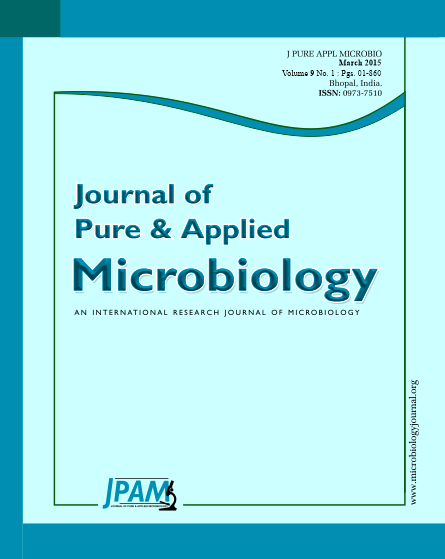24 endophytic strains were isolated from healthy Luotian chestnut tissue in China. 22 strains among the above 24 ones were bacterium, other strains were fungi. CE2, CE3 and CE8 showed effective biocontrol activities through flat confrontation method. Further, among the 3 strains CE3 had the best antagonistic effect. The inhibition zone width was 10.74 mm, 10.14 mm, 11.28 mm to Cryphonectria parasitica, Penicillium expansum and Fusarium solani. Based on the morphological, physiological characteristics and 16S rDNA sequence analysis, the strain CE3 was identified as Bacillus cereus. It’s obvious that CE3 has the best inhibitory effect before infection of pathogenic bacteria, the best concentration is 109 CFU ml-1. In order to enhance the bacteriostatic effect of B. cereus, we made a test, which was the B. cereus combine with auxiliary factor. The results showed that, When CaC12 and MgC12 were used in conjunction with CE3, there was significantly better control effect on P. expansum than individual uses of two adjuvants. The effect of treatment with CE3 alone had no significant difference. B. cereus CE3 controlled the growth of pathogenic fungi was enhanced by the addition of CaC12, MgC12. In addition, a combined use of carbendazim that had been diluted for 200,000 times and CE3 enabled the incidence rate of A. niger to drop significantly, with better inhibitory effect than exclusive use of CE3 or low doses of carbendazim.
Castanea mollissima Blume, Endophyte bacteria, Biological control, Isolation, Identification
© The Author(s) 2015. Open Access. This article is distributed under the terms of the Creative Commons Attribution 4.0 International License which permits unrestricted use, sharing, distribution, and reproduction in any medium, provided you give appropriate credit to the original author(s) and the source, provide a link to the Creative Commons license, and indicate if changes were made.


